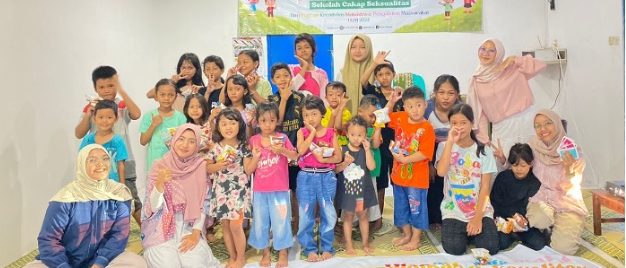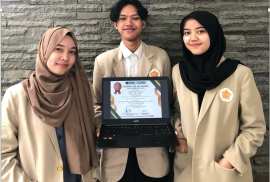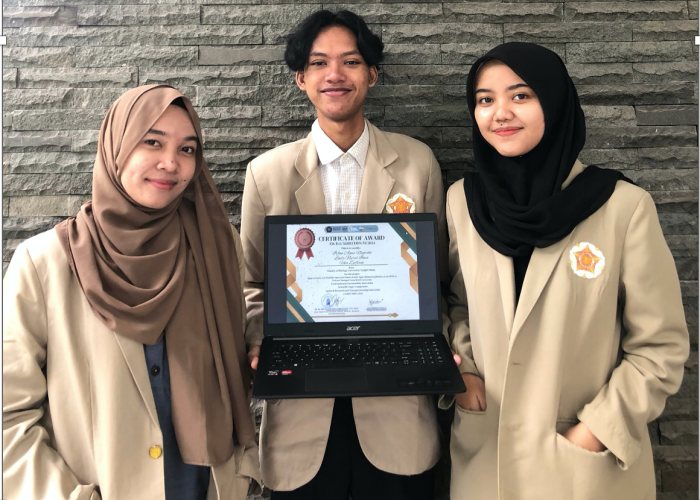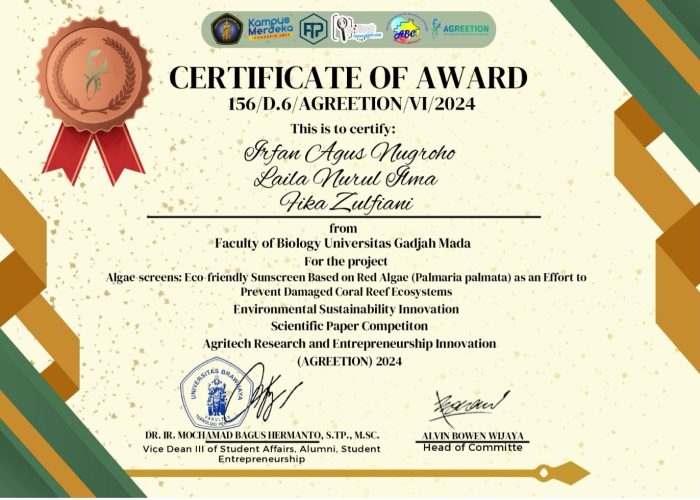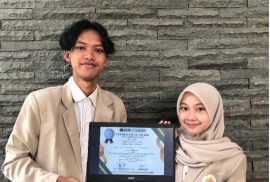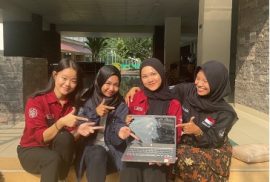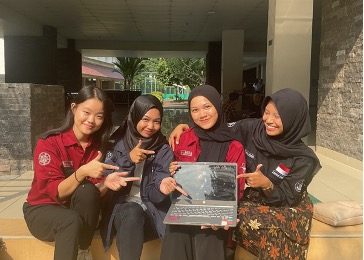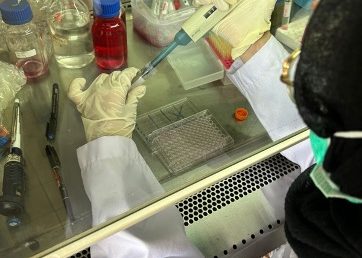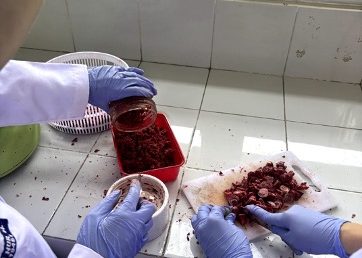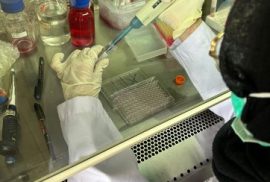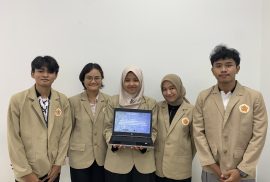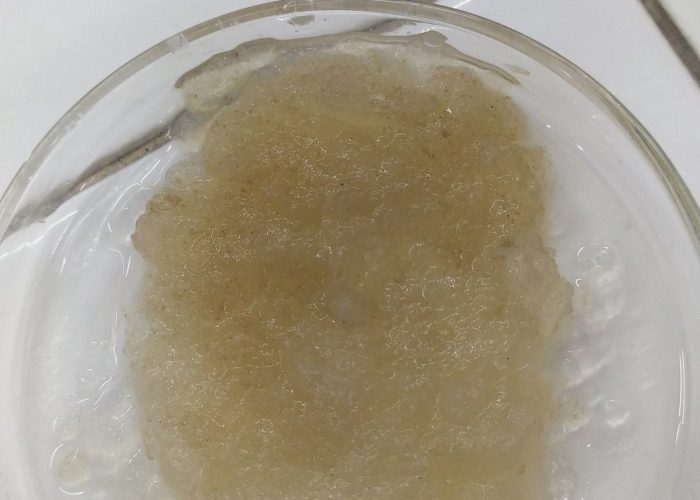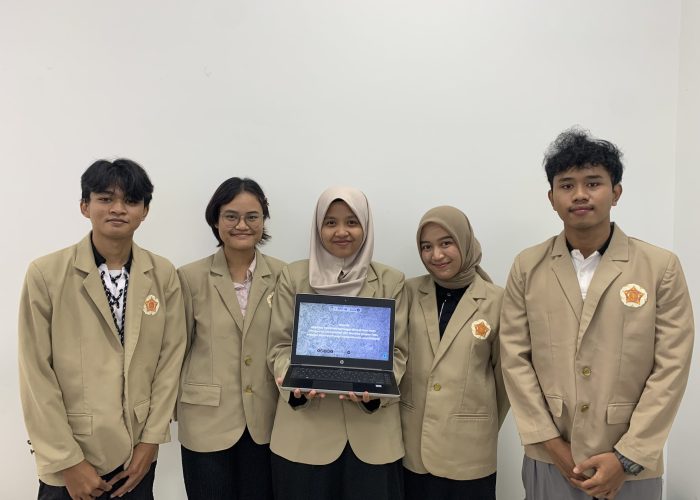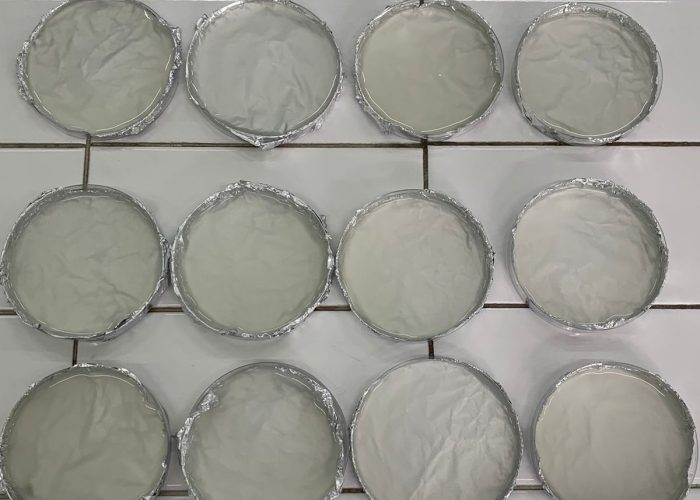
Arsip:
Achivements
The rapid advancement of technology has caused significant concern among the residents of Kampung Terban, particularly in RW 5, due to the rise in juvenile delinquency. Addressing technological advancement requires anticipation and preparation to mitigate its negative impacts. One such negative impact is sexual violence, proven by easy access to pornography on the internet, cases of cybersex, and promiscuity among children and teenagers. Even though Kampung Terban RW 5 is close to Universitas Gadjah Mada (UGM), sexual education has not yet reached the residents of Kampung Terban RW 5. The societal taboo on sex education is a reason sexual education is rarely taught by parents or teachers in schools. However, sexual education is a crucial foundation for reducing cases of sexual violence.
Based on the issue the team from UGM consists of Hafifah Nur Ainiyah (Biology 2022), Aulia Robiatul Adawiyah (Biology 2022), Diyan Ulsa (Psychology 2022), Danila Nur Rahmawati (Environmental Geography 2022), and Alma Puska Falasyifa (Biology 2022), under the guidance of Dr. Dwi Sendi Priyono, S.Si., M.Si conducted community service program titled “SCASE: School of Sexuality Education through Smart Snakes and Ladders Game as a Character-Building Medium for Kampung Terban Residents,” focuses on delivering age-appropriate sexual education, as recommended by WHO, through an interactive Snakes and Ladders game. This method ensures that the material is both well-understood and engaging.
Through the SCASE program, Hafifah and her team aim to enhance the welfare of the local community by empowering Desa Mitra. They use socialization, education, and training with the youth organization Karang Taruna Kampung Terban RW 5 (R05TER). Adina, a member of R05TER, stated, “There is a desire among the community to learn about sexual education, but they are still confused about where to start because it is considered a taboo topic, and there has never been a sexual education outreach program in this village.”
Supriyanto, the head of RW 5 Kampung Terban, said, “This program greatly assists the community, especially parents, who are unsure how to start discussions on sexual education with their children. It has had a very positive impact, particularly on children, who now understand which parts of their bodies should not be touched by others and know how to protect themselves to prevent sexual violence.”
The program expected to provide proper sexual education for residents Kampung Terban RW 5, and the community will be better prepared to face potential cases of sexual violence. It also hoped that the program would inspire other initiatives focused on sexual education, whether by the government or other community empowerment organizations. Author: Hafifah Nur Ainiyah.
The rapid advancement of technology has caused significant concern among the residents of Kampung Terban, particularly in RW 5, due to the rise in juvenile delinquency. Addressing technological advancement requires anticipation and preparation to mitigate its negative impacts. One such negative impact is sexual violence, proven by easy access to pornography on the internet, cases of cybersex, and promiscuity among children and teenagers. Even though Kampung Terban RW 5 is close to Universitas Gadjah Mada (UGM), sexual education has not yet reached the residents of Kampung Terban RW 5. The societal taboo on sex education is a reason sexual education is rarely taught by parents or teachers in schools. However, sexual education is a crucial foundation for reducing cases of sexual violence.
Based on the issue the team from UGM consists of Hafifah Nur Ainiyah (Biology 2022), Aulia Robiatul Adawiyah (Biology 2022), Diyan Ulsa (Psychology 2022), Danila Nur Rahmawati (Environmental Geography 2022), and Alma Puska Falasyifa (Biology 2022), under the guidance of Dr. Dwi Sendi Priyono, S.Si., M.Si conducted community service program titled “SCASE: School of Sexuality Education through Smart Snakes and Ladders Game as a Character-Building Medium for Kampung Terban Residents,” focuses on delivering age-appropriate sexual education, as recommended by WHO, through an interactive Snakes and Ladders game. This method ensures that the material is both well-understood and engaging.
Through the SCASE program, Hafifah and her team aim to enhance the welfare of the local community by empowering Desa Mitra. They use socialization, education, and training with the youth organization Karang Taruna Kampung Terban RW 5 (R05TER). Adina, a member of R05TER, stated, “There is a desire among the community to learn about sexual education, but they are still confused about where to start because it is considered a taboo topic, and there has never been a sexual education outreach program in this village.”
Supriyanto, the head of RW 5 Kampung Terban, said, “This program greatly assists the community, especially parents, who are unsure how to start discussions on sexual education with their children. It has had a very positive impact, particularly on children, who now understand which parts of their bodies should not be touched by others and know how to protect themselves to prevent sexual violence.”
The program expected to provide proper sexual education for residents Kampung Terban RW 5, and the community will be better prepared to face potential cases of sexual violence. It also hoped that the program would inspire other initiatives focused on sexual education, whether by the government or other community empowerment organizations. Author: Hafifah Nur Ainiyah.
The UGM Biology team, consisting of Irfan Agus Nugroho (Biology 2021), Laila Nurul Ilma (Biology 2021), and Fika Zulfiani (Biology 2021), successfully earned a Bronze Medal Quartile nomination in the Scientific Paper competition at the Agritech Research and Entrepreneurship Innovation (AGREETION) 2024. The subtheme of their entry was “Environmental Sustainability Innovation.” AGREETION 2024 is an international scientific paper and business plan competition organized by the Agritech Research and Study Club (ARSC) of the Faculty of Agricultural Technology, Universitas Brawijaya. This year’s theme was “Accelerating Agriculture and Agro-Industry Towards Sustainable Welfare with Eco-Friendly and Clean Production Principles.” Forty-two universities from 3 countries participated in this competition that was held online from April 20 to June 1, 2024.
The team presented an essay titled “Algae Screens: Eco-friendly Sunscreen Based on Red Algae (Palmaria palmata) as an Effort to Prevent Damaged Coral Reef Ecosystems.” The paper was inspired by Indonesia’s abundant coral reefs, which are threatened by degradation, partly due to sunscreen chemicals dissolving in the water. Chemicals in conventional sunscreens, oxybenzone and octinoxate can lead to coral bleaching. As a result, research conducted to develop eco-friendly sunscreen from natural ingredients. The natural compounds focused in this research were Mycosporine-Like Amino Acids (MAAs), abundant in red algae like Palmaria palmata. The research employed a literature study and molecular docking methods between MAA compounds (mycosporine glycine, porphyra-334, and shinorine) as ligands and the target protein Procollagen C-endopeptidase 1 (PCOLCE1). PCOLCE1 is a protein involved in regulating skin aging due to UV exposure, while the three MAA compounds used are known to possess the best antioxidant properties among MAA compounds. The research found that all three MAA compounds could bind to the target protein PCOLCE1, with porphyra-334 being the most effective. Therefore, the Algae-Screen product has the potential to be an effective natural sunscreen alternative to prevent photoaging while being safe for coral reef ecosystems. However, further research is needed to develop and refine the Algae-Screen formulation.
Author: Irfan Agus Nugroho
The UGM Biology team, consisting of Irfan Agus Nugroho (Biology 2021), Laila Nurul Ilma (Biology 2021), and Fika Zulfiani (Biology 2021), successfully earned a Bronze Medal Quartile nomination in the Scientific Paper competition at the Agritech Research and Entrepreneurship Innovation (AGREETION) 2024. The subtheme of their entry was “Environmental Sustainability Innovation.” AGREETION 2024 is an international scientific paper and business plan competition organized by the Agritech Research and Study Club (ARSC) of the Faculty of Agricultural Technology, Universitas Brawijaya. This year’s theme was “Accelerating Agriculture and Agro-Industry Towards Sustainable Welfare with Eco-Friendly and Clean Production Principles.” Forty-two universities from 3 countries participated in this competition that was held online from April 20 to June 1, 2024.
The team presented an essay titled “Algae Screens: Eco-friendly Sunscreen Based on Red Algae (Palmaria palmata) as an Effort to Prevent Damaged Coral Reef Ecosystems.” The paper was inspired by Indonesia’s abundant coral reefs, which are threatened by degradation, partly due to sunscreen chemicals dissolving in the water. Chemicals in conventional sunscreens, oxybenzone and octinoxate can lead to coral bleaching. As a result, research conducted to develop eco-friendly sunscreen from natural ingredients. The natural compounds focused in this research were Mycosporine-Like Amino Acids (MAAs), abundant in red algae like Palmaria palmata. The research employed a literature study and molecular docking methods between MAA compounds (mycosporine glycine, porphyra-334, and shinorine) as ligands and the target protein Procollagen C-endopeptidase 1 (PCOLCE1). PCOLCE1 is a protein involved in regulating skin aging due to UV exposure, while the three MAA compounds used are known to possess the best antioxidant properties among MAA compounds. The research found that all three MAA compounds could bind to the target protein PCOLCE1, with porphyra-334 being the most effective. Therefore, the Algae-Screen product has the potential to be an effective natural sunscreen alternative to prevent photoaging while being safe for coral reef ecosystems. However, further research is needed to develop and refine the Algae-Screen formulation.
Author: Irfan Agus Nugroho
The CEREALGAE team from The Faculty of Biology UGM, led by Hana Salwa (Biology 2022) along with Irfan Agus Nugroho (Biology 2021), successfully won a Silver Medal Quartile at the Agritech Research and Entrepreneurship Innovation (AGREETION) 2024 competition. The AGREETION 2024 is an international scientific paper and business plan competition organized by the Agritech Research and Study Club (ARSC) of the Faculty of Agricultural Technology, Universitas Brawijaya, with the theme ‘’Accelerating Agriculture and Agro-Industry Towards Sustainable Welfare with Eco-Friendly and Clean Production Principles.’’ Forty two universities from 3 countries participated in this competition that was held online from April 20 to June 1, 2024.
The team presented an essay titled “CEREALGAE: Cereal Formulation Based on Brown Algae (Sargassum sp.) Fortified with Moringa Leaves as a Food Diversification Strategy to Prevent Stunting.” The essay was motivated by the high stunting incidence in Indonesia. Aligned with the government’s efforts to achieve Sustainable Development Goals (SDGs) No 2, which aims to end hunger, achieve food security, and improve nutrition, along with the “Gerakan Nasional (GerNas)” program, food diversification can be a preventive measure to ensure that toddlers receive proper nutrition. One approach to achieving this goal is to optimize the utilization of natural ingredients, such as Sargassum sp. and moringa leaves, as functional food ingredients.
Sargassum sp. is a type of brown algae with high abundance and contains macronutrients like carbohydrates, proteins, lipids, and several micronutrients. The protein in Sargassum sp. can aid in cell regeneration during growth and repair, making it recommended for children’s growth phases. Fortifying food with moringa leaf powder can increase the protein, zinc, iron, calcium, and magnesium content. Moringa leaf powder contains about 27.1 g of protein, making it an excellent alternative to animal protein. A study indicates that moringa leaf fortification can significantly increase toddler weight and reduce acute nutrient deficiencies two months after consumption. The Indonesian society’s tendency to consume instant or fast food prompted the biology student team to create a functional food innovation in the form of cereal made from Sargassum sp. and moringa leaves. This innovation is expected to be one solution to reduce the prevalence of stunting in Indonesia through functional food diversification utilizing natural ingredients. Author: Kamilia Hana Salwa.
The CEREALGAE team from The Faculty of Biology UGM, led by Hana Salwa (Biology 2022) along with Irfan Agus Nugroho (Biology 2021), successfully won a Silver Medal Quartile at the Agritech Research and Entrepreneurship Innovation (AGREETION) 2024 competition. The AGREETION 2024 is an international scientific paper and business plan competition organized by the Agritech Research and Study Club (ARSC) of the Faculty of Agricultural Technology, Universitas Brawijaya, with the theme ‘’Accelerating Agriculture and Agro-Industry Towards Sustainable Welfare with Eco-Friendly and Clean Production Principles.’’ Forty two universities from 3 countries participated in this competition that was held online from April 20 to June 1, 2024.
The team presented an essay titled “CEREALGAE: Cereal Formulation Based on Brown Algae (Sargassum sp.) Fortified with Moringa Leaves as a Food Diversification Strategy to Prevent Stunting.” The essay was motivated by the high stunting incidence in Indonesia. Aligned with the government’s efforts to achieve Sustainable Development Goals (SDGs) No 2, which aims to end hunger, achieve food security, and improve nutrition, along with the “Gerakan Nasional (GerNas)” program, food diversification can be a preventive measure to ensure that toddlers receive proper nutrition. One approach to achieving this goal is to optimize the utilization of natural ingredients, such as Sargassum sp. and moringa leaves, as functional food ingredients.
Sargassum sp. is a type of brown algae with high abundance and contains macronutrients like carbohydrates, proteins, lipids, and several micronutrients. The protein in Sargassum sp. can aid in cell regeneration during growth and repair, making it recommended for children’s growth phases. Fortifying food with moringa leaf powder can increase the protein, zinc, iron, calcium, and magnesium content. Moringa leaf powder contains about 27.1 g of protein, making it an excellent alternative to animal protein. A study indicates that moringa leaf fortification can significantly increase toddler weight and reduce acute nutrient deficiencies two months after consumption. The Indonesian society’s tendency to consume instant or fast food prompted the biology student team to create a functional food innovation in the form of cereal made from Sargassum sp. and moringa leaves. This innovation is expected to be one solution to reduce the prevalence of stunting in Indonesia through functional food diversification utilizing natural ingredients. Author: Kamilia Hana Salwa
Universitas Gadjah Mada students Ribka Wijayanti and Dwina Aulia (Dentistry 2022), Anisah Qurrotu Aini (Biology 2022), and Naila Nurfadhilah (Pharmacy 2022) conducted research on the potential of Dayak onion as an antiproliferative and apoptosis-inducing agent for human tongue cancer cells – under the guidance of Prof. drg. Supriatno, M.Kes., MD.Sc., Ph.D..
Dayak onion (Eleutherine bulbosa (Mill.) Urb.) is a medicinal herb commonly used by the indigenous Dayak people and can be cultivated in various regions. Besides health benefits, this research also positively impacts the local economy. This research focuses on developing a natural therapy for tongue cancer by addressing the shortcomings of existing therapy. Plant-derived exosome-like nanoparticles, or PDENs, from Dayak onion, serve as a drug delivery method derived from Dayak onion exosomes.
“Cancer occurs due to the activity of proto-oncogenes, leading to excessive cell proliferation and the inhibition of tumor suppressor genes. We used PDENs because they have proven to inhibit proliferation and induce apoptosis in various types of cancer. Based on this, we wanted to explore its potential for tongue cancer treatment, ‘’ explained Ribka.
Ribka noted that using PDENs from Dayak onion induced apoptosis (programmed cell death) in cancer cells and reduced the number of proliferating cells.
“Dayak onions have a powerful IC50 equivalent to 38.97 ppm. This value is superior to other medicinal plants, such as soursop leaves and bajakah roots. The various therapeutic compounds in Dayak onion cannot be utilized as therapeutic agents using common extraction methods. However, with PDENs, all therapeutic compounds can be delivered to the target organ,” Anisah elaborated.
This research project was submitted as part of the Student Creativity Program in Exact Research (PKM-RE) with research funding support from the Ministry of Education, Culture, Research, and Technology (Kemendikbudristek) to conduct in-depth research and analysis on the potential of PDENs extract from Dayak onion. It hoped that this interdisciplinary collaborative research can inspire further exploration of natural potentials to improve human quality of life. [Writer: AQA]
Universitas Gadjah Mada students Ribka Wijayanti and Dwina Aulia (Dentistry 2022), Anisah Qurrotu Aini (Biology 2022), and Naila Nurfadhilah (Pharmacy 2022) conducted research on the potential of Dayak onion as an antiproliferative and apoptosis-inducing agent for human tongue cancer cells – under the guidance of Prof. drg. Supriatno, M.Kes., MD.Sc., Ph.D..
Dayak onion (Eleutherine bulbosa (Mill.) Urb.) is a medicinal herb commonly used by the indigenous Dayak people and can be cultivated in various regions. Besides health benefits, this research also positively impacts the local economy. This research focuses on developing a natural therapy for tongue cancer by addressing the shortcomings of existing therapy. Plant-derived exosome-like nanoparticles, or PDENs, from Dayak onion, serve as a drug delivery method derived from Dayak onion exosomes.
“Cancer occurs due to the activity of proto-oncogenes, leading to excessive cell proliferation and the inhibition of tumor suppressor genes. We used PDENs because they have proven to inhibit proliferation and induce apoptosis in various types of cancer. Based on this, we wanted to explore its potential for tongue cancer treatment, ‘’ explained Ribka.
Ribka noted that using PDENs from Dayak onion induced apoptosis (programmed cell death) in cancer cells and reduced the number of proliferating cells.
“Dayak onions have a powerful IC50 equivalent to 38.97 ppm. This value is superior to other medicinal plants, such as soursop leaves and bajakah roots. The various therapeutic compounds in Dayak onion cannot be utilized as therapeutic agents using common extraction methods. However, with PDENs, all therapeutic compounds can be delivered to the target organ,” Anisah elaborated.
This research project was submitted as part of the Student Creativity Program in Exact Research (PKM-RE) with research funding support from the Ministry of Education, Culture, Research, and Technology (Kemendikbudristek) to conduct in-depth research and analysis on the potential of PDENs extract from Dayak onion. It hoped that this interdisciplinary collaborative research can inspire further exploration of natural potentials to improve human quality of life. [Writer: AQA]
Diabetes mellitus (DM) is a global public health issue that can lead to macrovascular and microvascular complications. In Indonesia, the prevalence of DM among adults reaches 10.6%. Ineffective DM management can result in long-term metabolic, neurological, or vascular complications, making DM patients more susceptible to foot infections, which can increase the incidence of amputations. According to data from the Ministry of Health 2023, over one million DM patients in Indonesia have undergone foot amputations, with approximately 80% of these amputations beginning with foot ulcers. The prolonged infection of diabetic wounds is caused by high blood glucose levels, which increase bacterial proliferation. This issue exacerbated by immune system deficiencies, leading to restricted mobility and decreased daily productivity.
Based on this issue, Biology and Pharmacy UGM students Zahwa Khoirun Nisa (Biology 2022), Zatun Nithoghani Hafni (Biology 2021), Muhammad Nur Ikhsan (Biology 2021), Sekar Ayu Kusumawardani (Pharmacy 2022) and Alvian Chesyar Burhanudin (Pharmacy 2022) was developed a topical patch using two local Indonesian natural products: catfish oil and sugarcane bagasse biosilica, as an alternative treatment for diabetic wounds under guidance Dr. Adhyatmika, M.Biotech. This research, funded by the Ministry of Education and Culture, is part of the Student Creativity Program in Exact Research (PKM-RE).
The regular treatment for diabetic wounds is antibiotic therapy. However, excessive use of antibiotics can lead to antibiotic resistance, making treatment less effective. “We chose the patch formulation in this study to prevent excessive use of antibiotics while ensuring drug delivery to the wound with a more measured and controlled dosage,” said Zahwa. Hafni added that the patch formulation is also suitable for patients who cannot tolerate oral medications and avoids the first-pass effect, maintaining the bioavailability of the drug.
Catfish oil contains essential omega-3 fatty acids known to aid in wound healing. An innovation in this study involves adding sugarcane bagasse biosilica to the patch formulation. This biosilica has shown to possess antibacterial activity that supports wound healing.
The bagasse used obtained from the sugarcane milling residues at PT. Madubaru. “We collected the accumulated sugarcane bagasse, then subjected it to furnace treatment at 600°C for 1 hour. The resulting bagasse ash was then dissolved in NaOH and acidified with HCl to form a gel. This gel was then oven-dried to produce silica powder,” explained Ikhsan. The resulting biosilica was combined with catfish oil to create three formulations with different active ingredient concentrations (catfish oil: biosilica), namely F1 = 25:75, F2 = 50:50 and F3 = 75:25. “We made nanoemulsions with these three formulations, measured their particle sizes, then added gel bases to form nanoemulgel, which processed into patch preparations,” Alvian elaborated.
The patches were then tested on diabetic mellitus model rats. “We inflicted wounds on diabetic model rats and applied different treatments, including the three patch formulations. Wound diameter observed from day 1 to day 7,” Sekar said. The data showed the significant effects of the patch treatments on diabetic wound healing. Based on these conclusions, further analysis identified Formulation 1 (25:75) as the best for aiding diabetic wound healing. This research is expected to provide a theoretical foundation for developing comprehensive therapies to accelerate diabetic wound healing. With this advancement, we hope to contribute to improving the quality of life for diabetes patients and help them achieve better health and well-being. [Author: Zahwa Khoirun Nisa]
Diabetes mellitus (DM) is a global public health issue that can lead to macrovascular and microvascular complications. In Indonesia, the prevalence of DM among adults reaches 10.6%. Ineffective DM management can result in long-term metabolic, neurological, or vascular complications, making DM patients more susceptible to foot infections, which can increase the incidence of amputations. According to data from the Ministry of Health 2023, over one million DM patients in Indonesia have undergone foot amputations, with approximately 80% of these amputations beginning with foot ulcers. The prolonged infection of diabetic wounds is caused by high blood glucose levels, which increase bacterial proliferation. This issue exacerbated by immune system deficiencies, leading to restricted mobility and decreased daily productivity.
Based on this issue, Biology and Pharmacy UGM students Zahwa Khoirun Nisa (Biology 2022), Zatun Nithoghani Hafni (Biology 2021), Muhammad Nur Ikhsan (Biology 2021), Sekar Ayu Kusumawardani (Pharmacy 2022) and Alvian Chesyar Burhanudin (Pharmacy 2022) was developed a topical patch using two local Indonesian natural products: catfish oil and sugarcane bagasse biosilica, as an alternative treatment for diabetic wounds under guidance Dr. Adhyatmika, M.Biotech. This research, funded by the Ministry of Education and Culture, is part of the Student Creativity Program in Exact Research (PKM-RE).
The regular treatment for diabetic wounds is antibiotic therapy. However, excessive use of antibiotics can lead to antibiotic resistance, making treatment less effective. “We chose the patch formulation in this study to prevent excessive use of antibiotics while ensuring drug delivery to the wound with a more measured and controlled dosage,” said Zahwa. Hafni added that the patch formulation is also suitable for patients who cannot tolerate oral medications and avoids the first-pass effect, maintaining the bioavailability of the drug.
Catfish oil contains essential omega-3 fatty acids known to aid in wound healing. An innovation in this study involves adding sugarcane bagasse biosilica to the patch formulation. This biosilica has shown to possess antibacterial activity that supports wound healing.
The bagasse used obtained from the sugarcane milling residues at PT. Madubaru. “We collected the accumulated sugarcane bagasse, then subjected it to furnace treatment at 600°C for 1 hour. The resulting bagasse ash was then dissolved in NaOH and acidified with HCl to form a gel. This gel was then oven-dried to produce silica powder,” explained Ikhsan. The resulting biosilica was combined with catfish oil to create three formulations with different active ingredient concentrations (catfish oil: biosilica), namely F1 = 25:75, F2 = 50:50 and F3 = 75:25. “We made nanoemulsions with these three formulations, measured their particle sizes, then added gel bases to form nanoemulgel, which processed into patch preparations,” Alvian elaborated.
The patches were then tested on diabetic mellitus model rats. “We inflicted wounds on diabetic model rats and applied different treatments, including the three patch formulations. Wound diameter observed from day 1 to day 7,” Sekar said. The data showed the significant effects of the patch treatments on diabetic wound healing. Based on these conclusions, further analysis identified Formulation 1 (25:75) as the best for aiding diabetic wound healing. This research is expected to provide a theoretical foundation for developing comprehensive therapies to accelerate diabetic wound healing. With this advancement, we hope to contribute to improving the quality of life for diabetes patients and help them achieve better health and well-being. [Author: Zahwa Khoirun Nisa]


